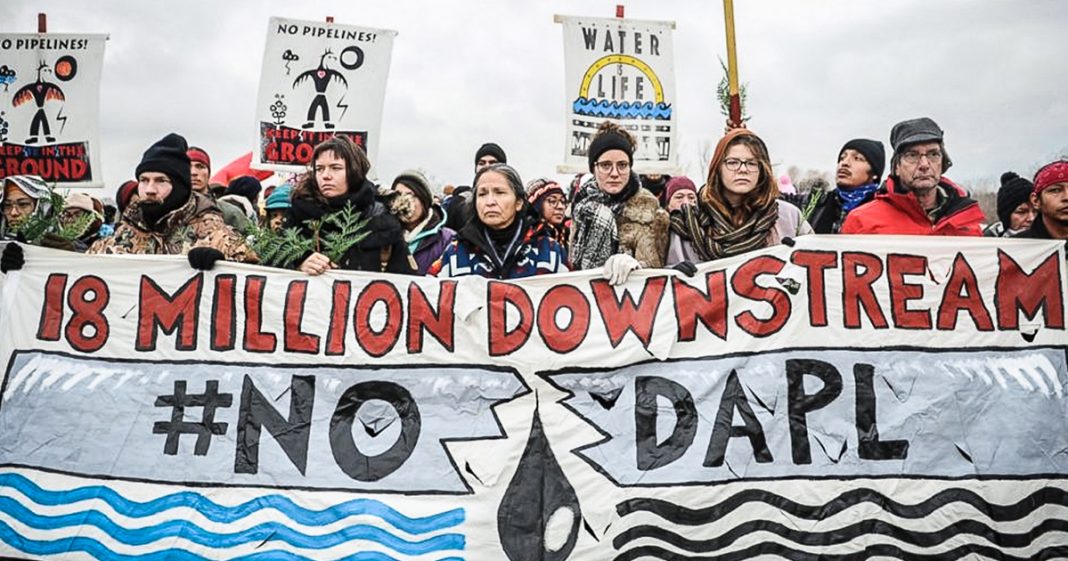On Monday, the developers for the Dakota Access Pipeline announced that they had filled the controversial pipeline with oil, readying it to begin operating sooner rather than later.
No start date has officially been announced, but the pipeline is reportedly three months behind schedule thanks to the efforts of Water Protectors who occupied an incomplete portion of the pipeline for ten months.
Protests began in mid-2016 and ending when President Trump signed an executive order giving the pipeline and similarly controversial Keystone XL Pipeline the go-ahead. At its peak, millions were watching closely as police forcibly intervened in the protests and saw as a handful of water protectors were exposed to hypothermia from freezing water hoses, attacked with smoke bombs, and were beaten and arrested en masse by local police.
In response to those widespread protests, President Obama halted the pipeline, pending a full environmental impact survey. Unfortunately, Obama’s actions weren’t enough, and Trump cast off that requirement shortly after taking office.
For the thousands who protested the pipeline, the idea that the pipeline, which has the potential to leak into major water sources and will plow directly through Standing Rock Sioux territory near sacred burial grounds, is a devastating defeat.
The pipeline’s success is especially concerning in the wake of news that a pipeline which leaked less than 200 miles away in December actually released far more oil into the surrounding land than previously thought. Initial estimates from the Bell Fourche Pipeline in North Dakota estimated that their leak spilled 176,000 gallons of oil, but more recent estimates put the gallons spilled closer to 529,839 gallons.
The massive spill is now being considered the state’s largest spill, and raises more questions about the safety of the Dakota Access Pipeline. As many opponents of the DAPL and other pipelines have noted, it is not a question of “if,” but “when,” a pipeline snaking across America will fail and pollute the land, air, and water.




![Senator Schumer: “Single Payer [Health Care] is On The Table”](https://sandbox.trofire.com/wp-content/uploads/2017/07/Universal-Healthcare-218x150.jpg)